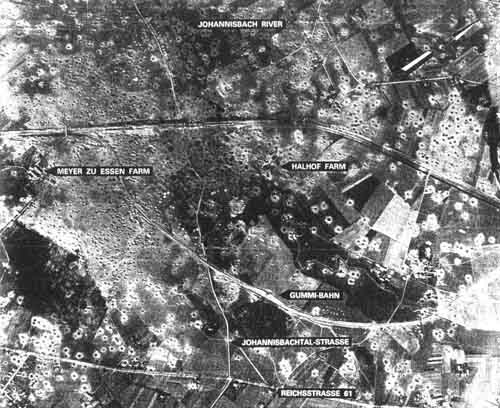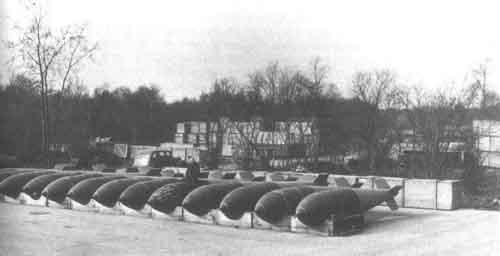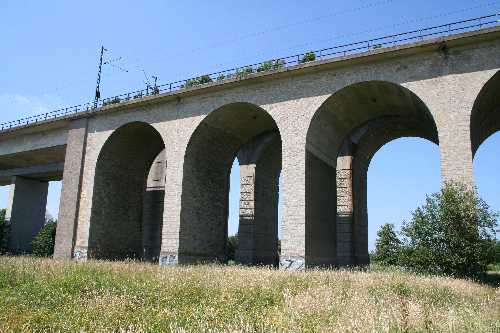Not suggesting an assassination or anything, but what would happen if Putin died? I have no idea the succession plan in Russia or if they rank by age, position, bank account, or war crime count. Not suggesting he's a good guy (because he's not), but he is the guy keeping all the crazies in line in the world's 2nd largest nuclear power.
jmabarone said:Not suggesting an assassination or anything, but what would happen if Putin died? I have no idea the succession plan in Russia or if they rank by age, position, bank account, or war crime count. Not suggesting he's a good guy (because he's not), but he is the guy keeping all the crazies in line in the world's 2nd largest nuclear power.
I've heard that most of Putin's cronies are even more aggressive than him and wonder if on some level, that's an insurance policy? "Don't kill Putin, he's the sane one!"
jmabarone said:Not suggesting an assassination or anything, but what would happen if Putin died? I have no idea the succession plan in Russia or if they rank by age, position, bank account, or war crime count. Not suggesting he's a good guy (because he's not), but he is the guy keeping all the crazies in line in the world's 2nd largest nuclear power.
There are no sheep who would be potential successors. It would only get worse if Putin goes before Russia's offensive capabilities are severely depleted. Once (hopefully) they are effectively disarmed then the wolves can fight over the carcass.
Unless it is an internal assassination, planned by multiple higher ups in the government, I'd assume if Putin died, things would get chaotic quick in Russia. Troops might need to get pulled out of Ukraine to try to keep order, and a lot of people would be jockeying to control the armed forces. Not to mention leaders of two PMCs maybe throwing their hats in the ring.
So, I think it would seriously hurt Russia's position in Ukraine, but the consequences in their own country could be really bad. And something tells me Russian refugees trying to enter Ukraine would not be welcomed.
In reply to eastsideTim :
There was a video recently that detailed how the various factions in the Russian government are at odds with each other, like Shoigu (sp?) is an outsider, a wannabe, not one of the rich mobster oligarchs, which is why his presence and position grates the owners of the PMCs, and why he also likes to screw with them.
It also explains why there is so little inter-service communication, or outright sabotage by preventing communication or telegraphing the others' locations to Ukranian forces.... really, what is happening in Ukraine seems like a civil war via third party.
In reply to aircooled : Here you can see why Tokmak is so critical. The only rail line running from Crimea to Russian, not over the Kerch bridge, runs just south of the town.
Are the Ukrainians close enough to lob a few missiles at the rail line? A target does not get more static than that.
In reply to Noddaz :
It's not that easy to destroy a rail line. They are pretty resilient, and it takes damage to long stretches for it to be significantly problematic. Aside from capture, the only successful anti-railway efforts have required quite a bit of effort to achieve results, with Sherman's 1864 Atlanta campaign and T.E. Lawrence's Arab Revolt being the standout successes. By contrast, Allied bombing of German railroads during WWII was notoriously ineffective, in spite of the massive tonnage expended on marshalling yards and other key points.
In reply to 02Pilot :
Is it like bombing runways, where the holes are really just a temporary problem and fixes are super fast?
Pete. (l33t FS) said:In reply to eastsideTim :
There was a video recently that detailed how the various factions in the Russian government are at odds with each other, like Shoigu (sp?) is an outsider, a wannabe, not one of the rich mobster oligarchs, which is why his presence and position grates the owners of the PMCs, and why he also likes to screw with them.
It also explains why there is so little inter-service communication, or outright sabotage by preventing communication or telegraphing the others' locations to Ukranian forces.... really, what is happening in Ukraine seems like a civil war via third party.
Interesting take.
I can't help but think, while so much of Russia's military is focused in Ukraine. Exactly how hard would it be for western forces to March into Moscow?
Would we be doing Russians a favor? Arrest a few mobsters, return Russia to the Russian people?
In reply to thatsnowinnebago :
Sort of. For it to be effective, rails have to be torn up and bent so they can't be reused. Ideally, you hit hard-to-repair points like bridges and tunnels. Then you target the repair crews when they come in to fix the damage. Still, it's not easy to pull off effectively in a contested environment.
In reply to frenchyd :
If you don't mind marching to Moscow across the world's first glass-lined, self-lighting parking lot, then it's easy. The minute NATO crosses that frontier, the balloon goes up. The Russians burned everything in front of Napoleon and Hitler; don't think for a minute they won't nuke their own territory to stop an invasion.
02Pilot said:In reply to thatsnowinnebago :
Sort of. For it to be effective, rails have to be torn up and bent so they can't be reused. Ideally, you hit hard-to-repair points like bridges and tunnels. Then you target the repair crews when they come in to fix the damage. Still, it's not easy to pull off effectively in a contested environment.
Yeah, rail lines are easy to repair quickly if you are in a hurry, and don't need them to be perfect, just functional. I'm trying to remember if the Civil War is where saboteurs would heat up rails and pretzel them around a tree.
One advantage modern systems also have is sensors to tell if rails have been disconnected, so there is less likelihood of an active train getting derailed on a damaged section of tracks. There are ways around them, but not if you are dropping bombs or firing artillery.
I thought the effective way to disrupt rail lines in WWII involved fighters doing strafing runs on actual trains, not just attacking the tracks.
Tracks are hard to repair if they are covered in broken cars and they are useless if all of your locomotives are shot to hell.
eastsideTim said:02Pilot said:In reply to thatsnowinnebago :
Sort of. For it to be effective, rails have to be torn up and bent so they can't be reused. Ideally, you hit hard-to-repair points like bridges and tunnels. Then you target the repair crews when they come in to fix the damage. Still, it's not easy to pull off effectively in a contested environment.
Yeah, rail lines are easy to repair quickly if you are in a hurry, and don't need them to be perfect, just functional. I'm trying to remember if the Civil War is where saboteurs would heat up rails and pretzel them around a tree.
One advantage modern systems also have is sensors to tell if rails have been disconnected, so there is less likelihood of an active train getting derailed on a damaged section of tracks. There are ways around them, but not if you are dropping bombs or firing artillery.
Like this?

Pete. (l33t FS) said:I thought the effective way to disrupt rail lines in WWII involved fighters doing strafing runs on actual trains, not just attacking the tracks.
Tracks are hard to repair if they are covered in broken cars and they are useless if all of your locomotives are shot to hell.
Somebody's seen Thunderbolt.
In reply to Pete. (l33t FS) :
Generally speaking, attacks on rolling stock were discouraged as too dangerous and inefficient. Targeting priorities before Normandy were specific choke point marshalling yards and heavy repair facilities - the nodes that were hardest to repair quickly and that would most likely produce widespread secondary effects. They were also easier to hit when considering the limited bombsight technology available at the time.
Obviously, technology has changed a lot since then, so precision strikes are easier, but there are other considerations as well. For the Russians, the very limited rail network in the occupied areas is hugely vulnerable, and they know it. Because it is a limited war, however, their rolling stock and repair facilities are relatively safe, as they can be replenshed or duplicated from resources safely inside Russia.
02Pilot said:In reply to frenchyd :
If you don't mind marching to Moscow across the world's first glass-lined, self-lighting parking lot, then it's easy. The minute NATO crosses that frontier, the balloon goes up. The Russians burned everything in front of Napoleon and Hitler; don't think for a minute they won't nuke their own territory to stop an invasion.
Just how deep is Putin's grip on Russia? I understand the Politburo is completely Putin's Yes men. But isn't the military sort of split right now? How close are they willing to follow the guy who's arranged for so many officers to die at the hands of Ukraine?
I'm sure our CIA has worked with less to oust unwanted leaders.
In reply to frenchyd :
No offense, Frenchyd, but that sort of talk gives me the creeps. Practically nobody wants to be "saved" from their own countrymen. There would be no surer way to achieve relative unity among the various factions within Russia than by giving them a common enemy.
Noddaz said:In reply to aircooled : Here you can see why Tokmak is so critical. The only rail line running from Crimea to Russian, not over the Kerch bridge, runs just south of the town.
Are the Ukrainians close enough to lob a few missiles at the rail line? A target does not get more static than that.
Very much so. Below is the range of a HIMARS from behind the front line. I can reach the outskirts of Melitipol! The second is the 155mm's and they can almost reach it also (though clearly you don't want artillery near the front lines). Obviously if the Ukrainians can make a bit of progress, the Russians will have a huge issue. They of course are very aware of this and why there are some many defensive fortifications in that area.
A HIMARS at least, should be accurate enough to have a good chance of taking out a rail line, but as notes, they can be pretty easy to repair. A better tactic would be to wait for a train to come, hit the line in front of of it and when it stops (even if it wants to back up) blast the train.


To follow on to the above post, Tokmak appears to under attack rather regularly (large explosions reported yesterday). Also, in line with the current discussion, just outside of Tokmak:
Train derailed in Belgorod region after explosions in Belgorod region

A bit to the east, this happened:
Major General Sergey Goryachev, Chief of Staff of the Russian 35th Combined Arms Army, was killed in the Zaporizhzhia region
Apparently the general in charge of the defense of the south! Rocket attack (probably HIMARS). One has to wonder how they knew exactly where he was... might make some other generals a bit nervous.

02Pilot said:In reply to Noddaz :
It's not that easy to destroy a rail line. They are pretty resilient, and it takes damage to long stretches for it to be significantly problematic. Aside from capture, the only successful anti-railway efforts have required quite a bit of effort to achieve results, with Sherman's 1864 Atlanta campaign and T.E. Lawrence's Arab Revolt being the standout successes. By contrast, Allied bombing of German railroads during WWII was notoriously ineffective, in spite of the massive tonnage expended on marshalling yards and other key points.
As an interesting supplement to this. As I remember, the analysis of the bombing campaign in Germany came to the general conclusion that the attacks on industry where far less effective than expected (quick to repair and easy to disperse in many cases). One of the conclusions was that if they Allies had concentrated on the German rail network, they would have had a much larger effect on industry.
Of course, the devil is in the details. Hitting rail lines with (WWII) strategic bombers from 20,000 ft is almost impossible. The Bielefeld Viaduct (mid 1944) is a prime example of this. Here are some highlights:
Following D-Day in June 1944 the attacks against the viaduct began in earnest and for several months B-17 and B-24s of the US Eighth Airforce tried to destroy the viaduct. Their 250kg and 500kg bombs did little except turn the surrounding landscape into a crater land.

On February 22nd the weather was better and 617 Squadron dropped 18 Tallboys on the viaduct. Although the crews thought they had achieved one hit this was not the case. The track away from the viaduct had been badly damaged but the Organisation Todt quickly repaired the damage.
The tallboy BTW is a 12,ooo lb bomb!

The next move of course.... use a bigger bomb... the 22,000lb Grand Slam! The results can be seen below. It's also pretty obvious where the Tallboys fell!

If you want to read a more complete coverage of the story:
https://www.militaryhistories.co.uk/viaduct/damage
Oh, and in case you are wondering, that viaduct (minus the obviously removed part shown above) is STILL in existence:

Kreb (Forum Supporter) said:In reply to frenchyd :
No offense, Frenchyd, but that sort of talk gives me the creeps. Practically nobody wants to be "saved" from their own countrymen. There would be no surer way to achieve relative unity among the various factions within Russia than by giving them a common enemy.
That is where the political dancing around comes into play... the balance between assisting, and giving Russia ammo to fuel their propaganda.
Not that they don't mind making things up from whole cloth, but propaganda with any kind of credibility will work on the doubters, too.
I suppose that the USA intelligence organizations are pushing hard, but not any harder than before, to help Russian people see a better path eithout Putin. At the same time, and unstable Russia is a scary proposition to explore. A stable-ish transition would be important. I would hope that the USA is whispering just a little louder to the PRC, the middle eastern set of countries and EU that they need to handle their hemisphere's issue in Russia.
Maybe another wild conjecture, but will write it, would the PRC absorbing Russia be welcome?
In reply to aircooled :
Similar to what my impressions were from reading about WW2 aviation campaigns. That if you get into statistics, the rail bombings did help if maintained in frequency to not allow ease of repair, attrition of rail workers, and if your ground forces are committed to advance then it built momentum. But because it was a vague gain, it led to many feeling the resources expended and lives lost was too great.
In case you where wondering, the Russians have not stopped being D's. I am guessing this is in retaliation to the killing of the general? I cannot imagine it is doing what they think it is doing.
Ruzzia targeted the residential building in Krivyi Rih, the home city of President Zelenskyi. Many people are dead, many injured. Ruzzia is a terrorist state.
Death toll of Russian missile strikes in Kryvyi Rih increased to 10, 1 person under rubble, 28 more wounded

You'll need to log in to post.